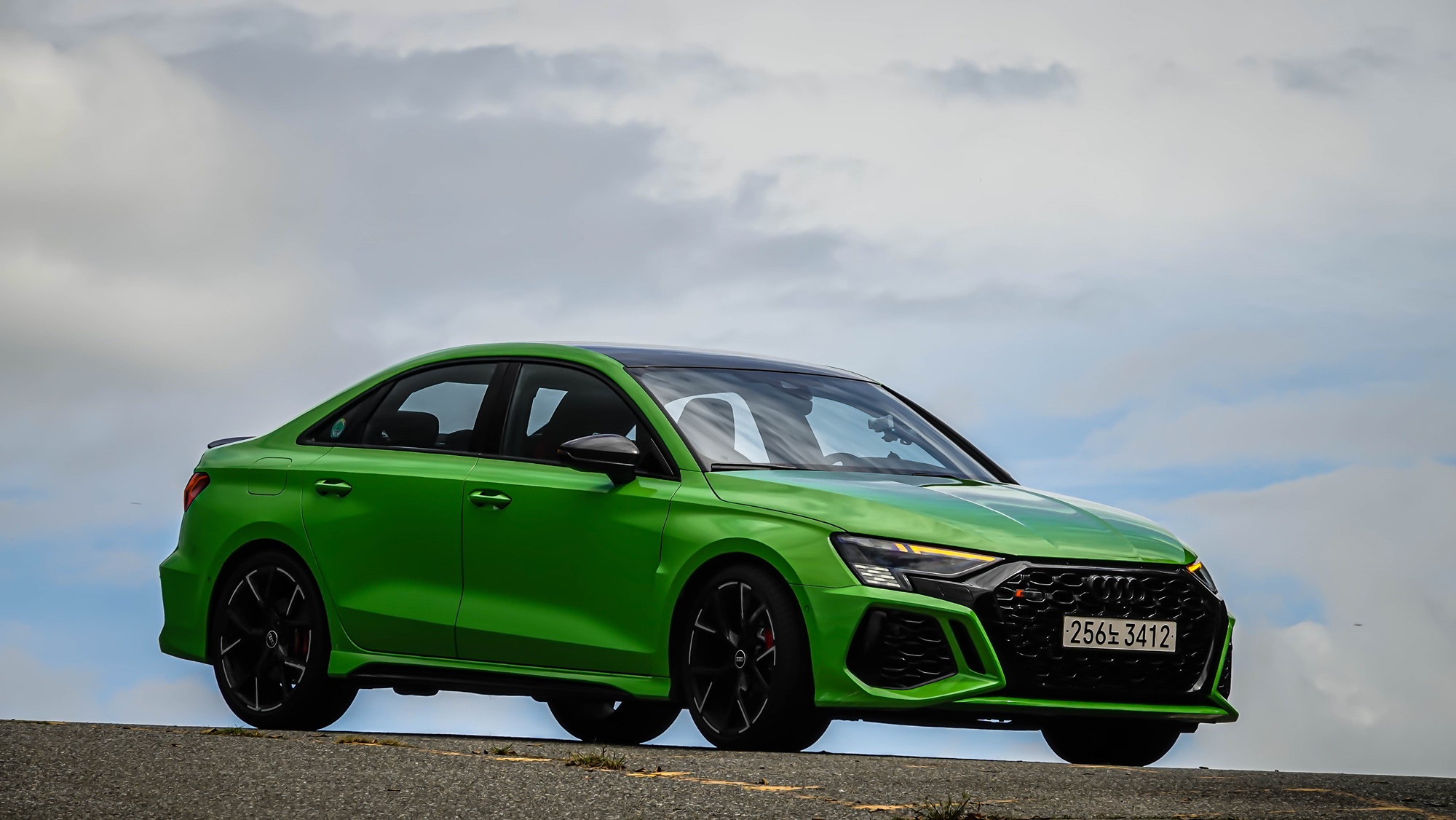
The Karamel Green color is strikingly noticeable. RS 3, a brief name that embodies a clear character, is a high-performance compact sports sedan. RS stands for Renn Sport in German, which translates to Racing Sport in English.
A 1.8 lock-to-lock steering ratio. With a length of 4,540mm and a wheelbase of 2,631mm, the vehicle handles its body tightly. Evading a sudden roadkill scenario on the freeway with a sharp steer, the short and concise maneuver was impressive.
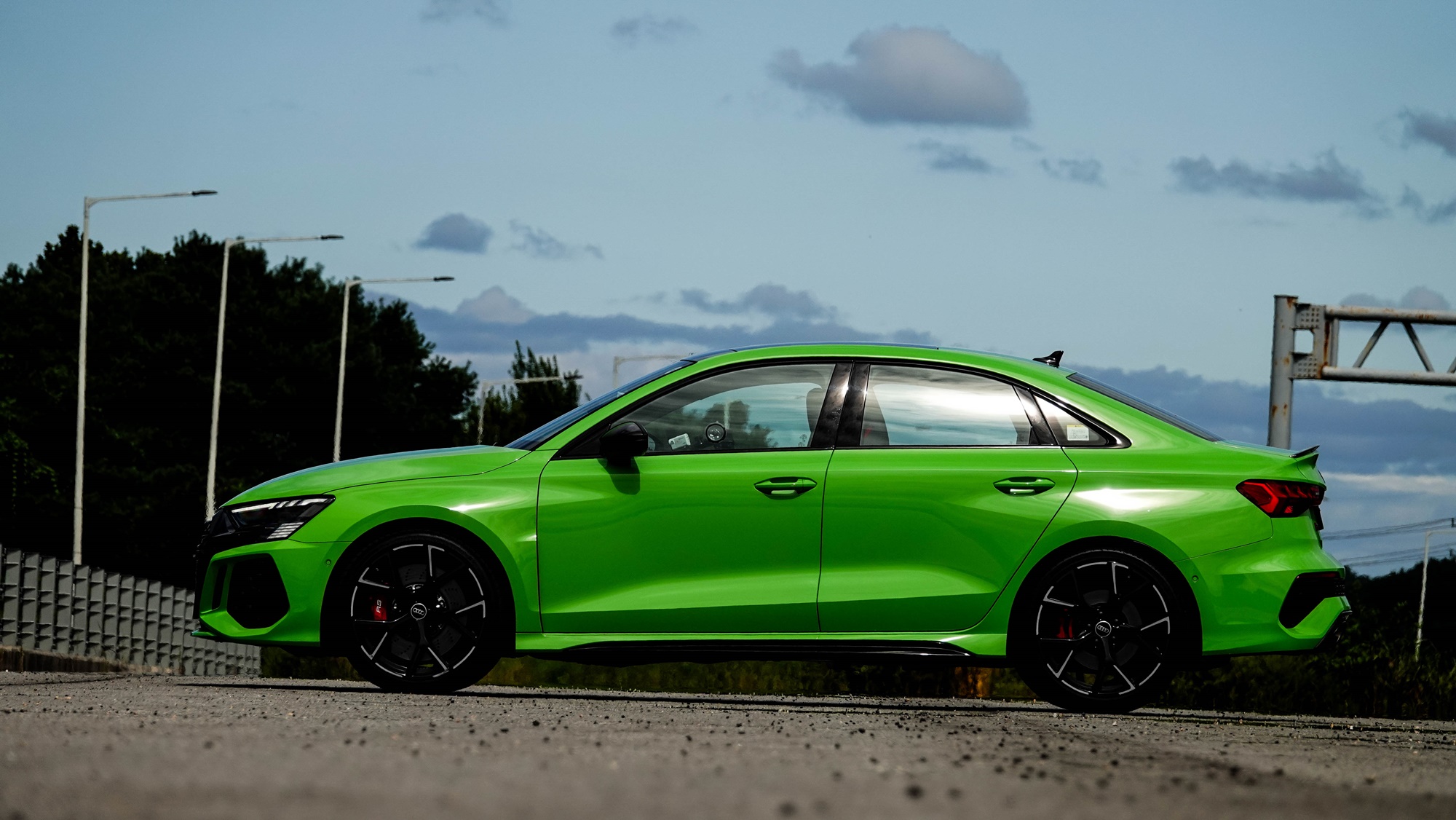
The infinitely solid suspension suits a high-performance sports sedan. It skims over the road surface as it is, yet it can feign softness in low to mid-speed ranges.
As speeds increase, there is no holds barred in showing its true character. The engine sound erupts explosively. The decisive shift of the 7-speed S-tronic transmission and the engine surging unreservedly into the red zone starting from 7,000rpm present an acceleration experience of a different dimension. The car’s essence, its instinct to drive, is unapologetically laid bare. Gripping a pounding heart, it rushes down the road like running towards a lover, as if being drawn towards the end of the street.
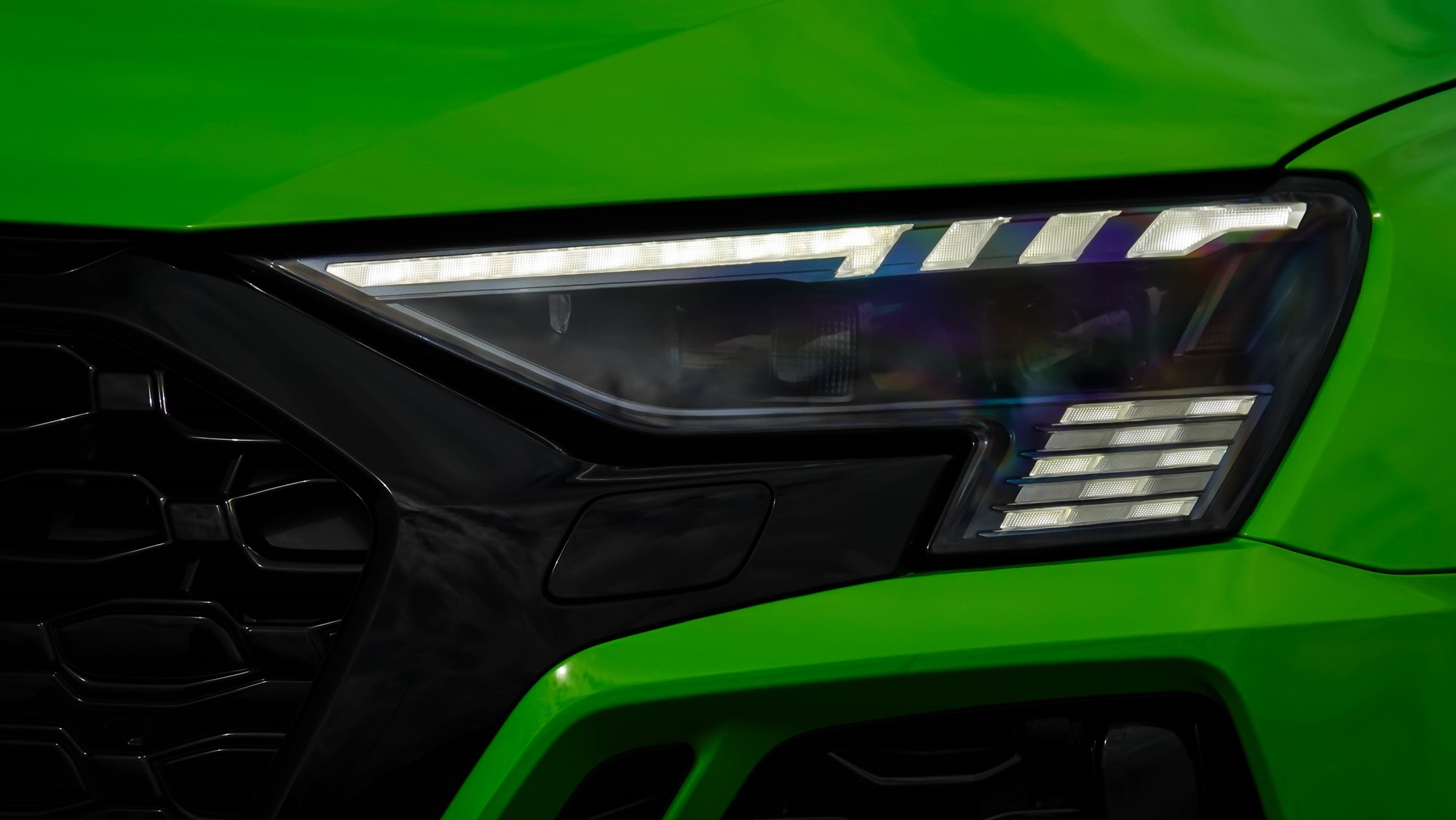
Audi is skilled at manipulating light. They excel in communication through light. The detail is evident in the headlights and taillights. The ‘Matrix LED headlights’ play gently when approaching or moving away from the car. The dynamic turn signals sequentially send light, possessing a calming effect on viewers.
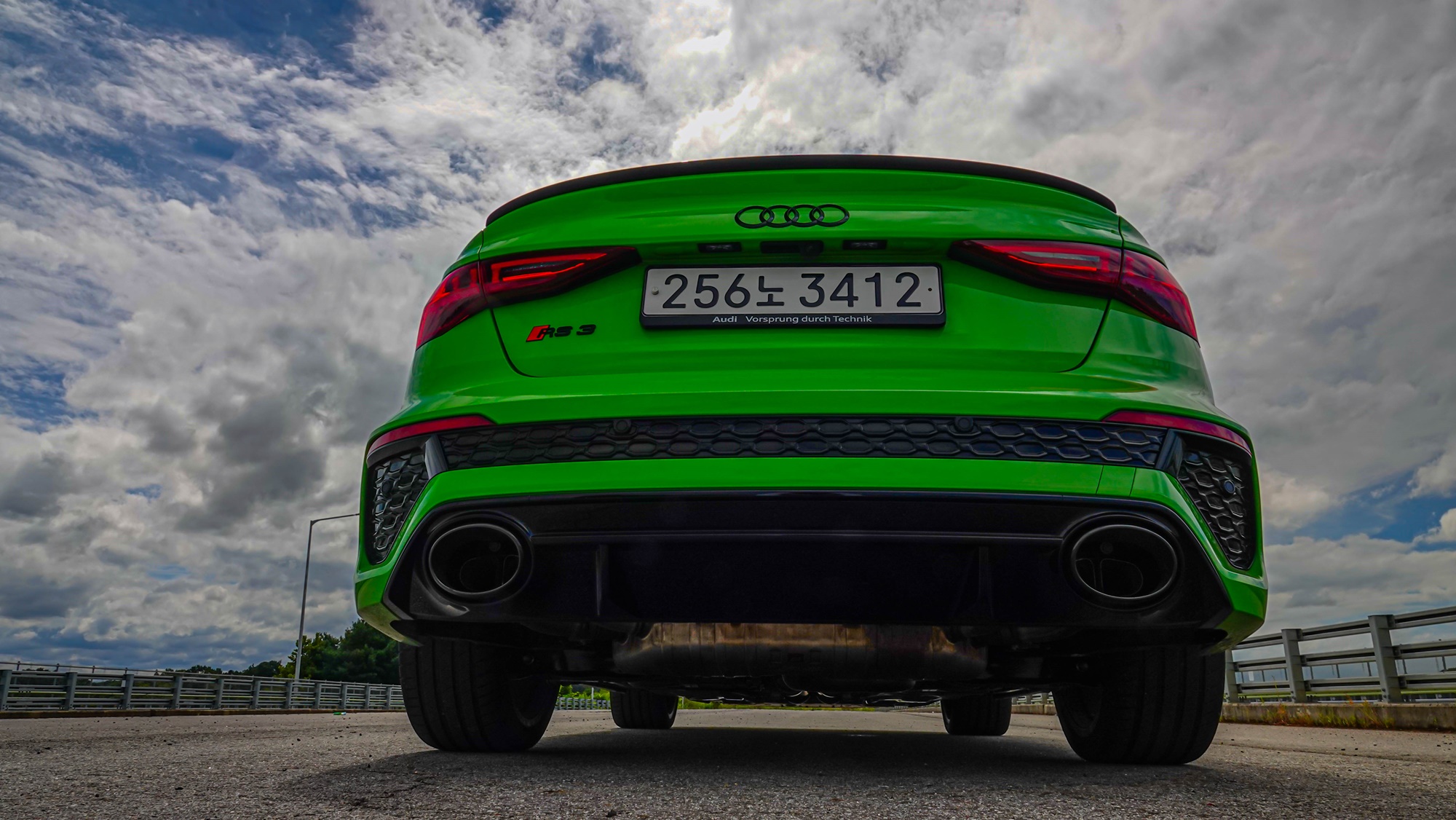
The RS3 badge affixed on the grille and rear, along with the large air intakes on both bumpers and side air intakes, positioned like a code, sends an unmistakable message to those who recognize it: Ready to run!
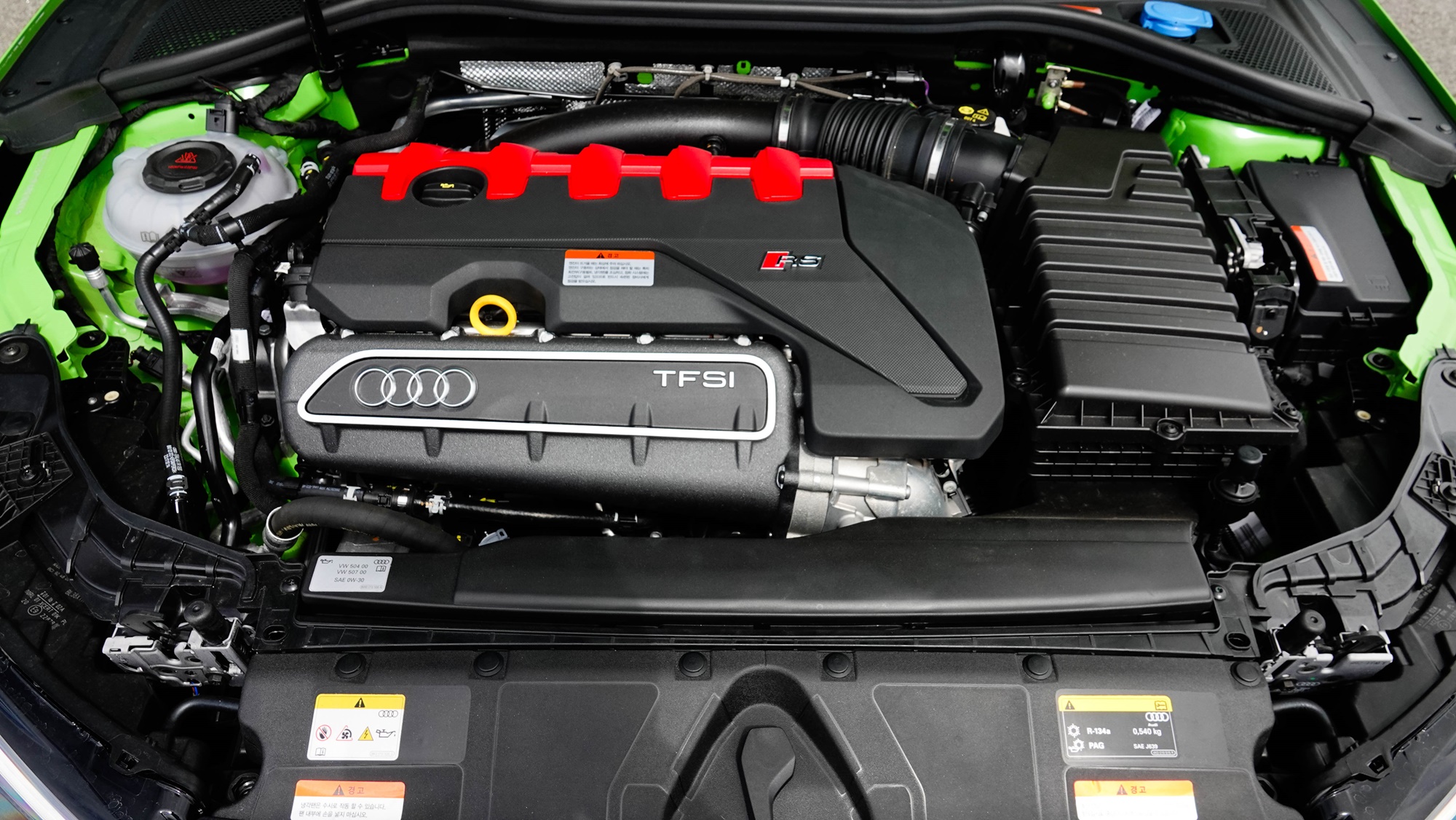
The inline 5-cylinder engine is placed horizontally. It’s not commonplace to use a 5-cylinder engine, and doing so in a horizontal configuration is noteworthy. The vehicle features a front-wheel-based all-wheel-drive system. The front tires are wider, measuring 265/30ZR19, while the rear ones are 245/35ZR19.
The RS torque splitter dynamically distributes power more effectively. It allows the power going to the rear wheels to be split side to side, sending more power to one side. This enhances cornering characteristics in limit situations, but its performance may not be felt on regular roads. It becomes a playground for experts when pushed to its limits on the circuit.
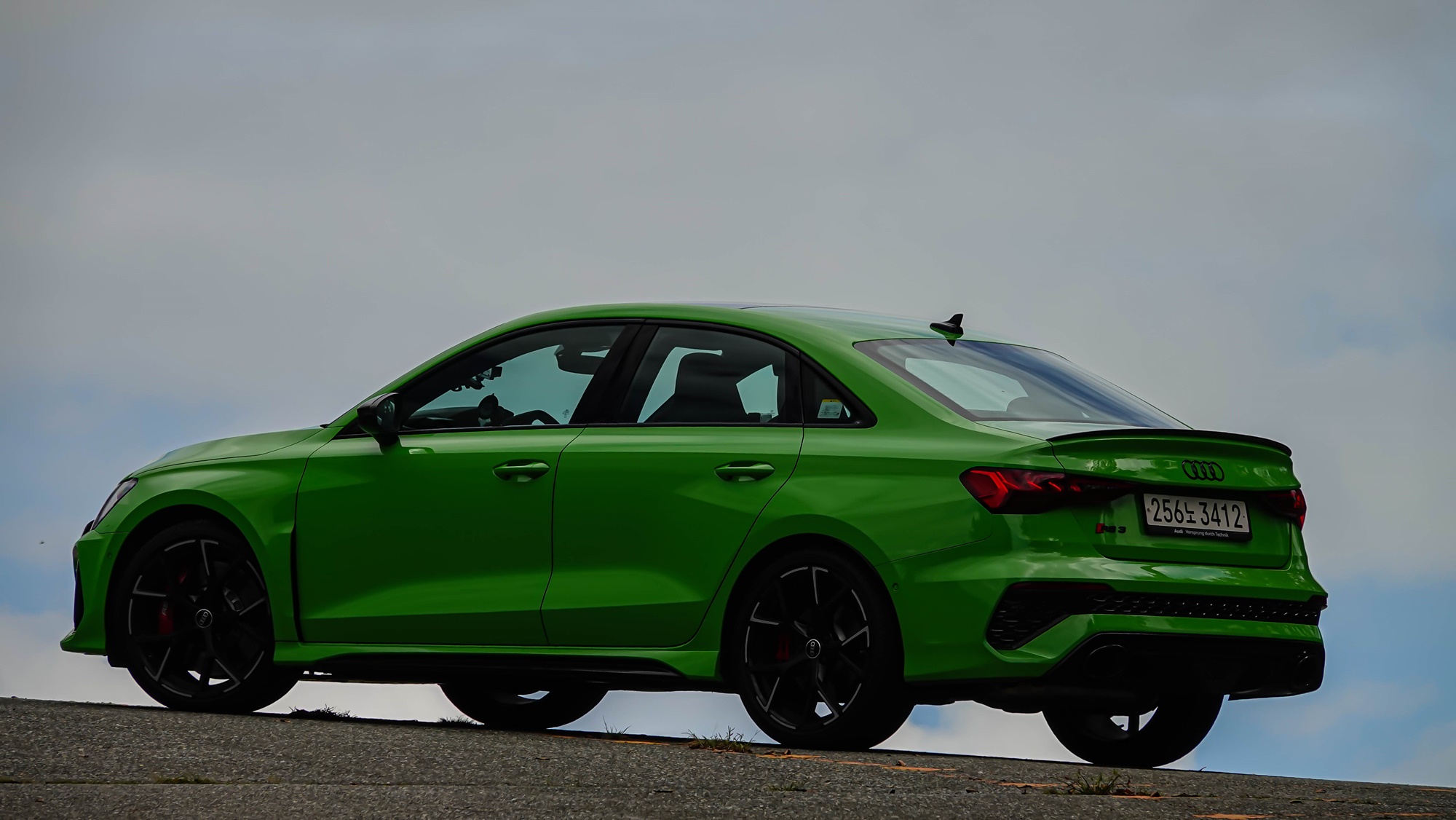
During hard braking, the firm suspension provides robust support to the body leaning forward. The seatbelt wraps around, while hazard lights and the pre-sense warning lights sequentially alert the driver. It’s reminiscent of trained soldiers calmly responding to emergency situations as per their manual. The brake calipers, adorned in red, look even more impressive.
This small car includes a Bang & Olufsen 3D premium sound system. It features a 680W amplifier with 16 channels and 15 speakers. Heavy metal seems fitting, given that the interior isn’t particularly quiet. To have such a high-end audio system in a car that isn’t very quiet or spacious is quite something.
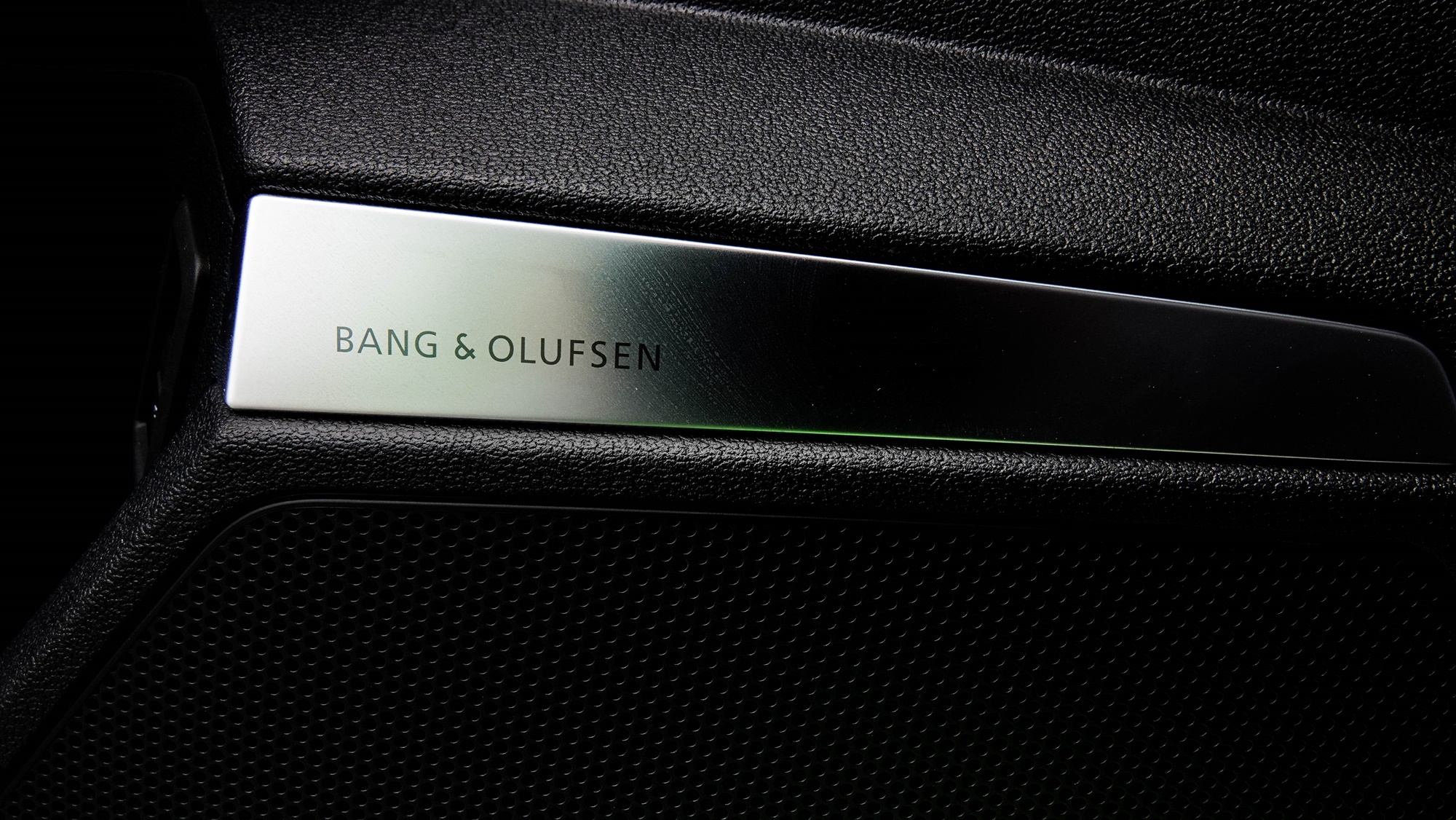
The 12.3-inch ‘Virtual Cockpit Plus’ is dazzling. The dedicated RS mode display exhibits a pulse-pounding heart. The rpm gauge dances up and down into the red zone, dazzling the viewer. With sound added, it creates a moment of immersion. The graphics change the dashboard appearance, displaying a wealth of information on the screen.
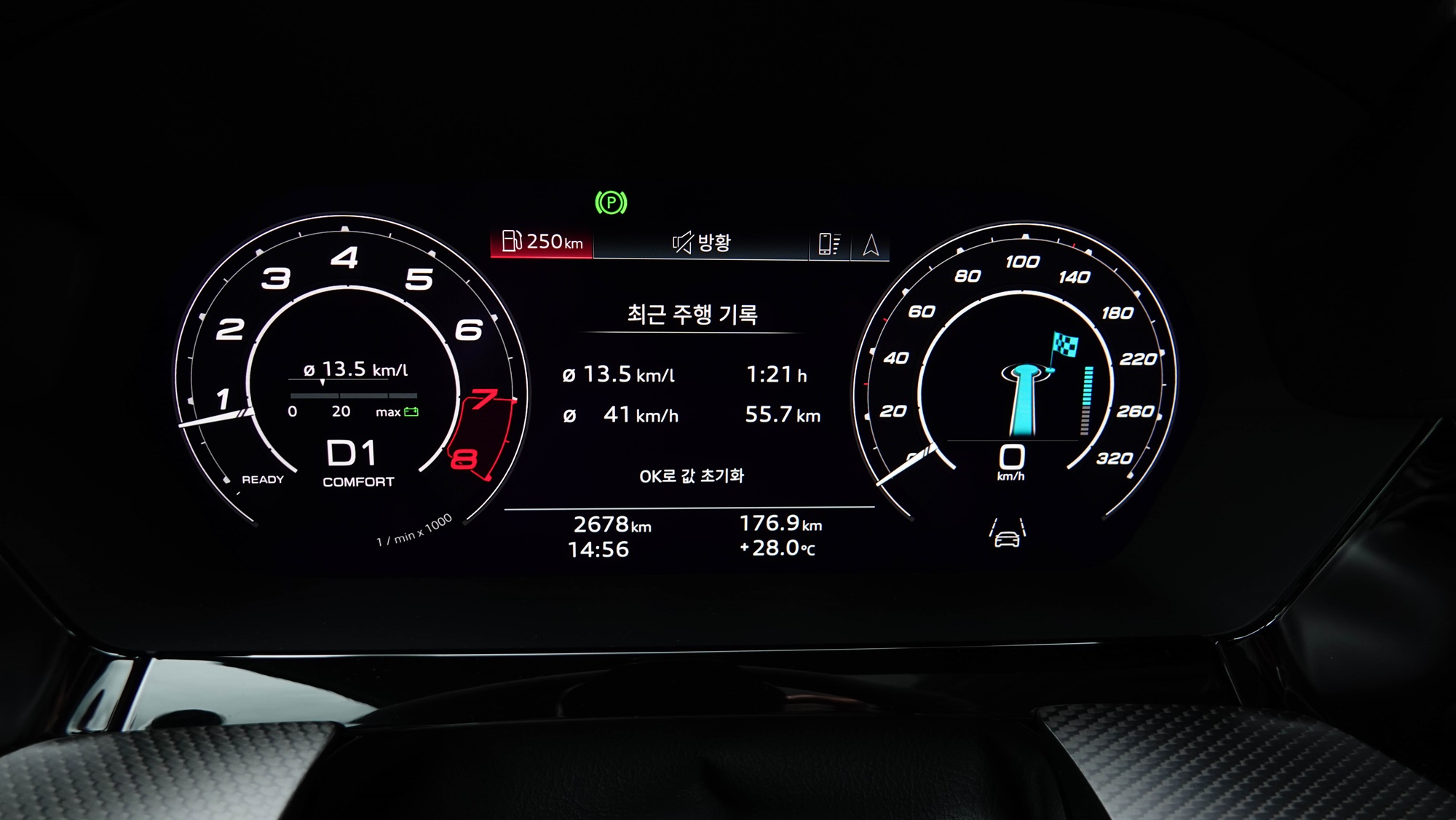
The manufacturer claims the 0-100km/h acceleration performance is 3.8 seconds. However, after attaching a GPS measurement device and conducting tests, the best recorded time was 4.24 seconds. The certified combined fuel economy stands at 9.2km/L. The actual driving fuel efficiency observed over 55km, while driving from Paju to Seoul, was 13.4km/L.
The selling price is 77,959,000 won.
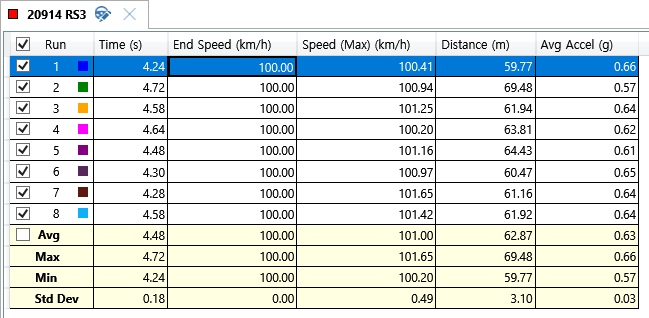
Oh Jong-hoon’s direct opinion
The dashboard was cluttered. Instead of displaying a well-organized layout, it provided a level of simply listing a plethora of information. I understand the eagerness to present various information in numerous ways and the desire to offer more options, but there was actually no indication of fuel levels. Though the driving range was provided, the remaining fuel amount was not indicated. It would be best to overhaul the dashboard design by stripping off all the excess information.
The driver assistance system emits warnings when crossing line markings. It would be ideal if it maintained the car centered in its lane, but it only warns just before straying from it, pushing the car back in. An upgrade seems necessary.
Oh Jong-hoon yes@autodiary.kr
-
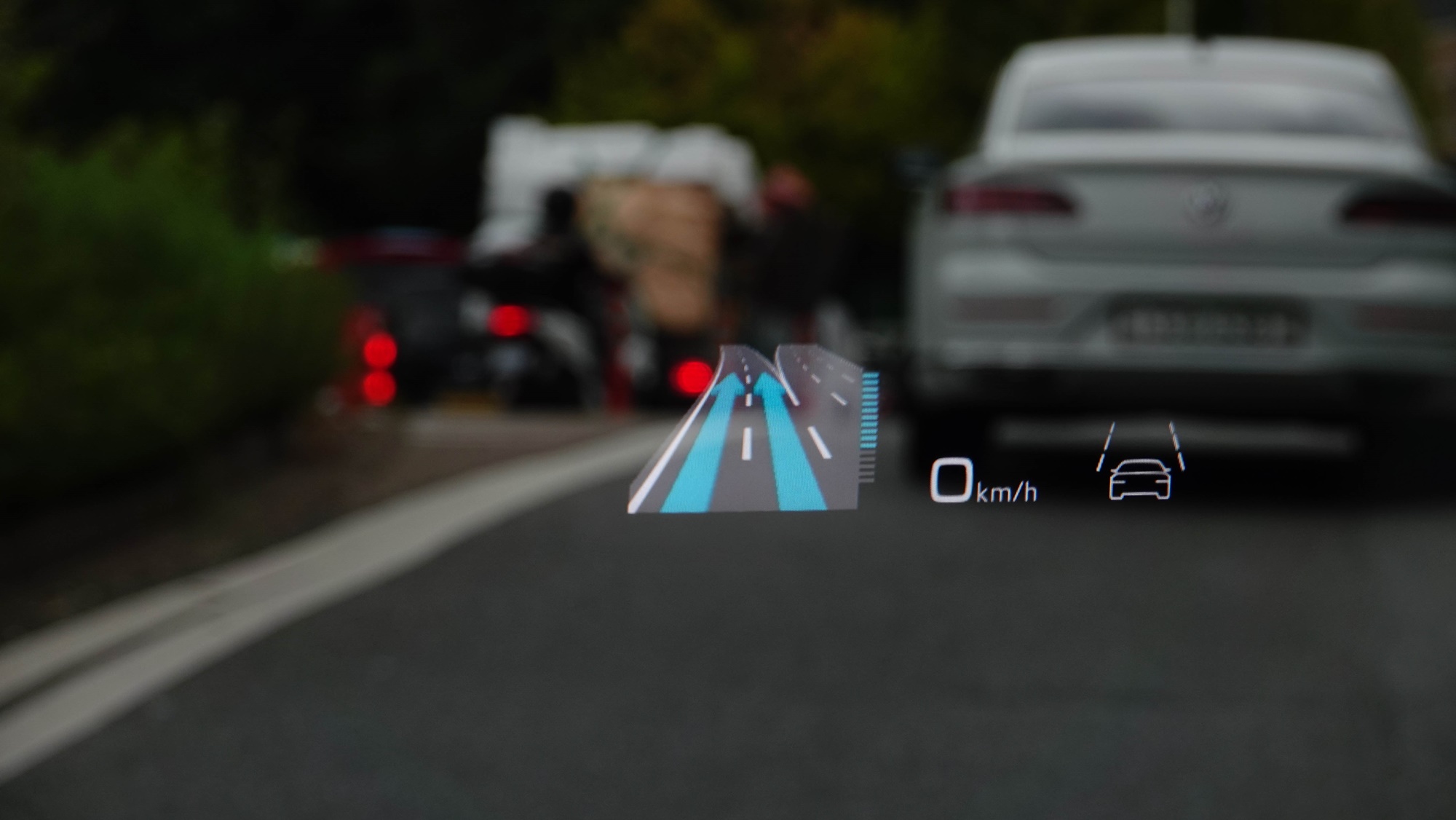
The large head-up display of the RS3, clearly visible in color on the wide screen. Photo by Oh Jong-hoon -

When speeds increase, its true personality emerges without any compromise. Photo by Oh Jong-hoon -
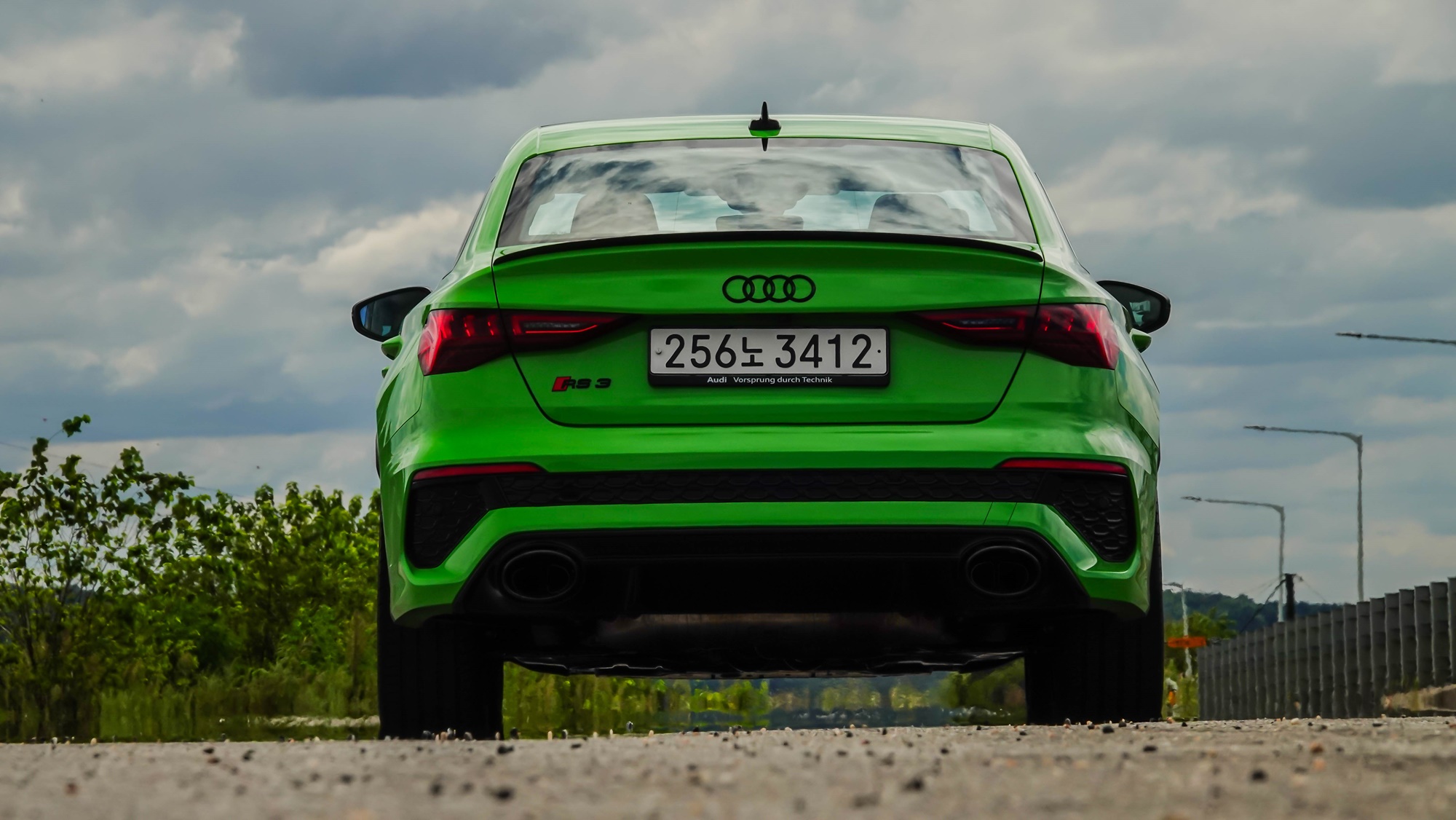
The robust rear of the Audi RS3. Photo by Oh Jong-hoon -
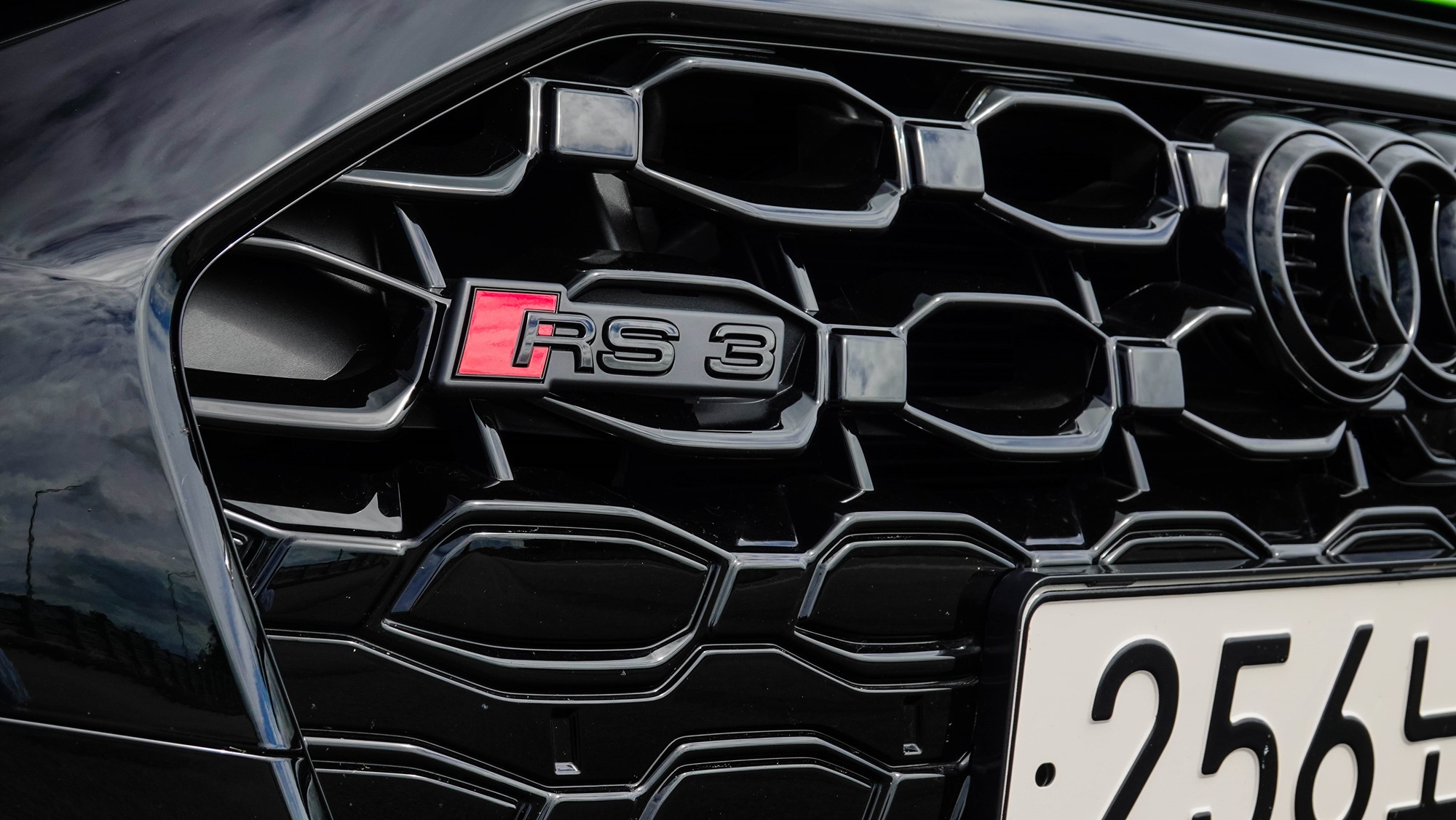
Honeycomb structure radiates grille and RS3 badge. Photo by Oh Jong-hoon -
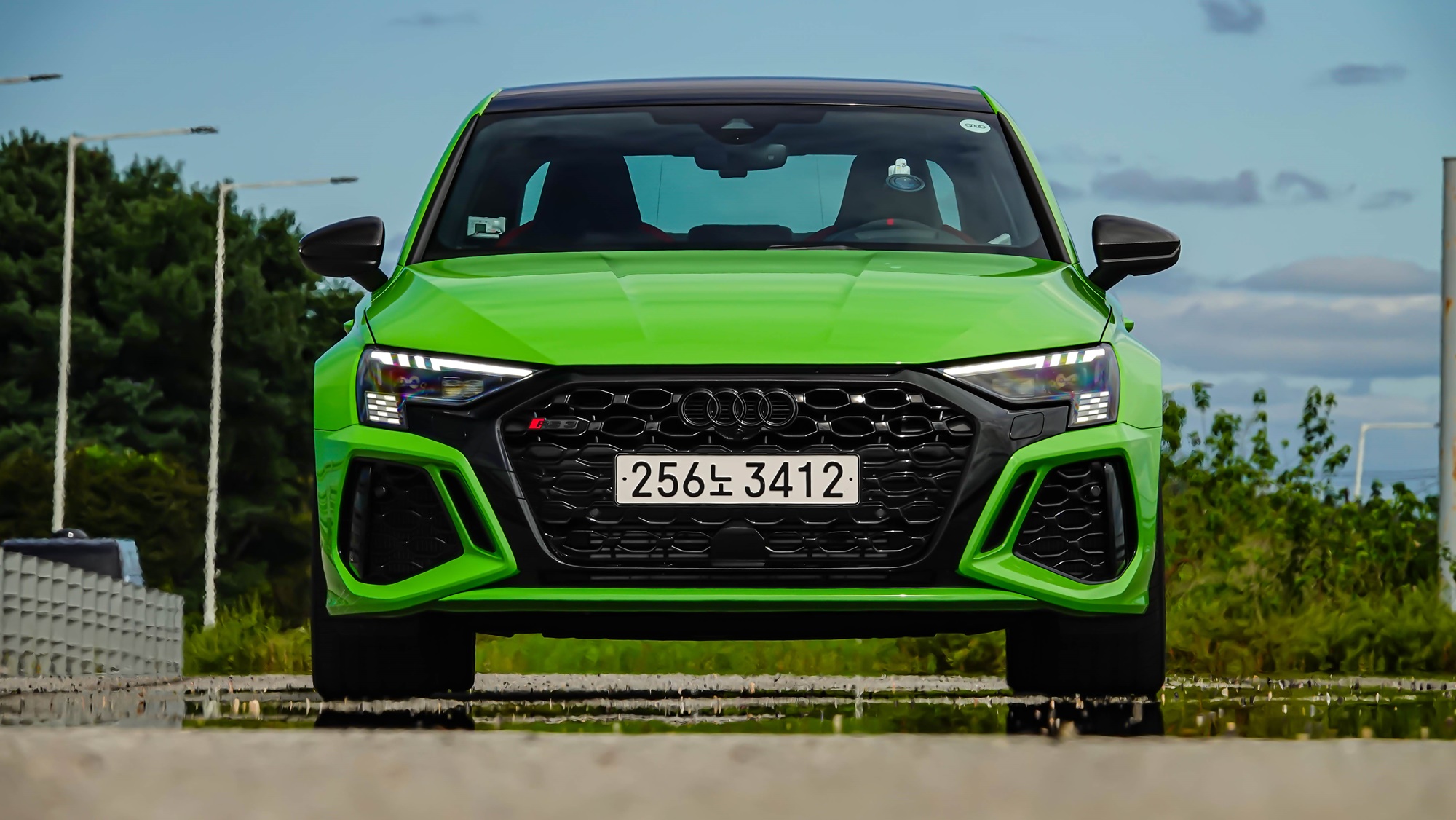
A large grille and larger air intakes on the front bumper. Photo by Oh Jong-hoon -
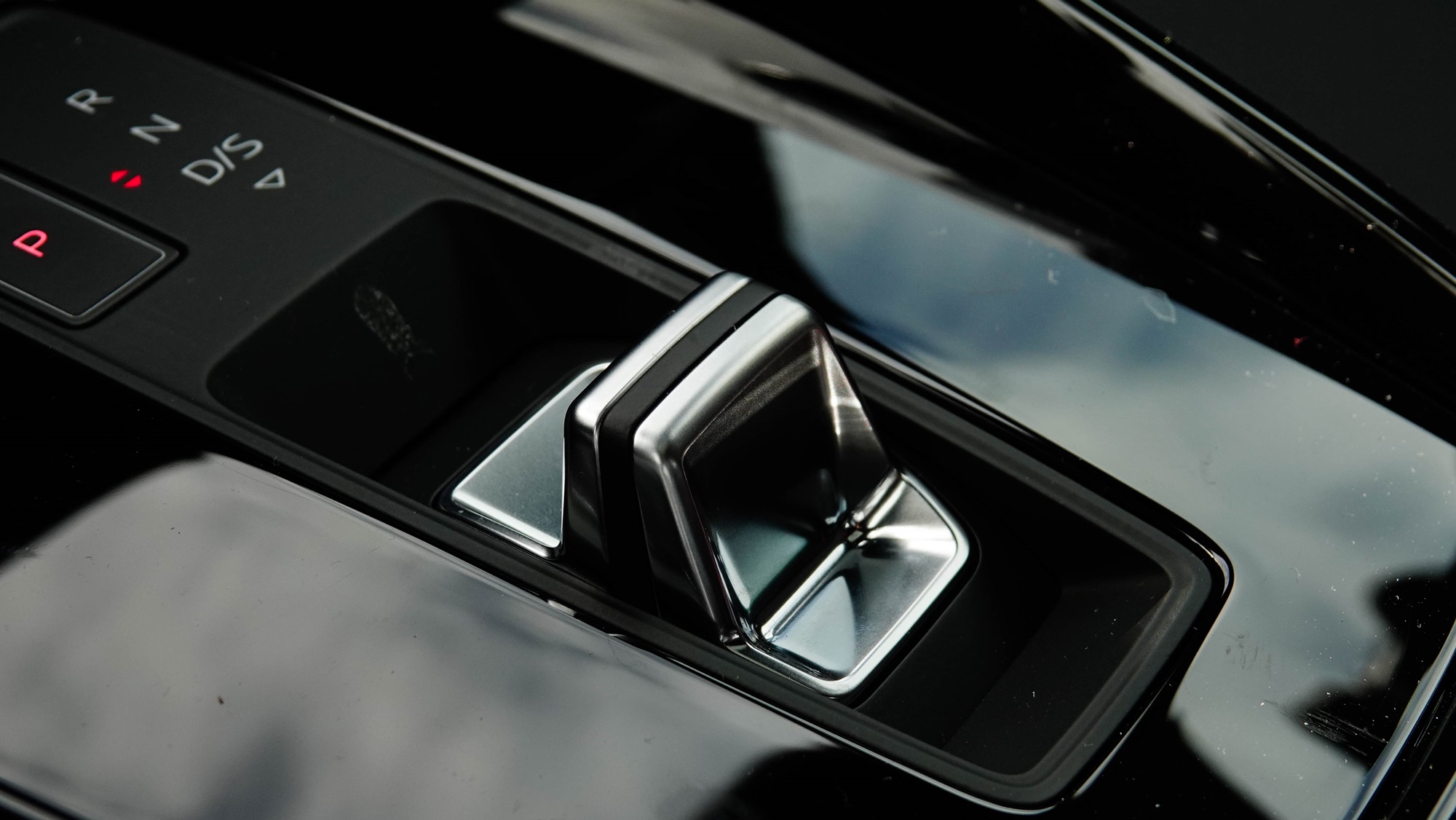
The gearshift lever for the 7-speed S Tronic transmission. Photo by Oh Jong-hoon -
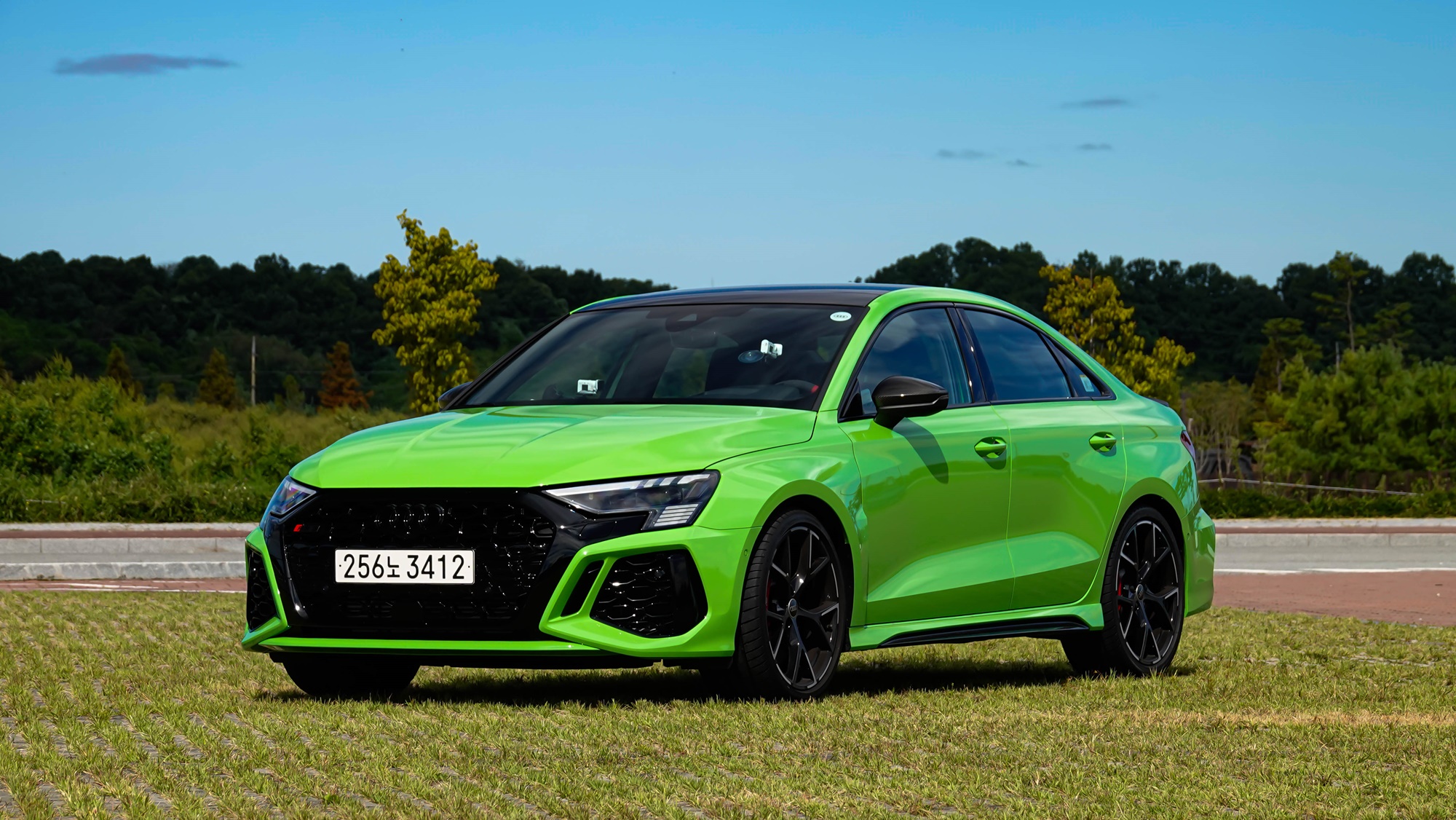
The infinitely solid suspension suits a high-performance sports sedan. Photo by Oh Jong-hoon

